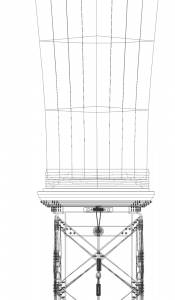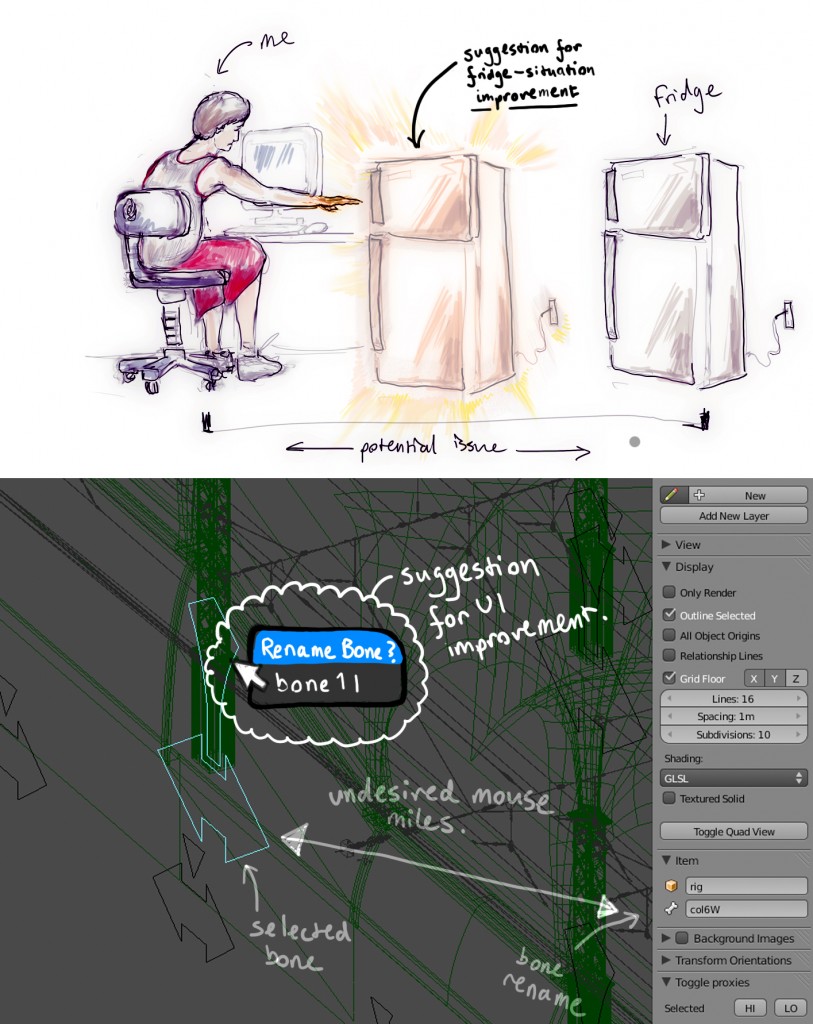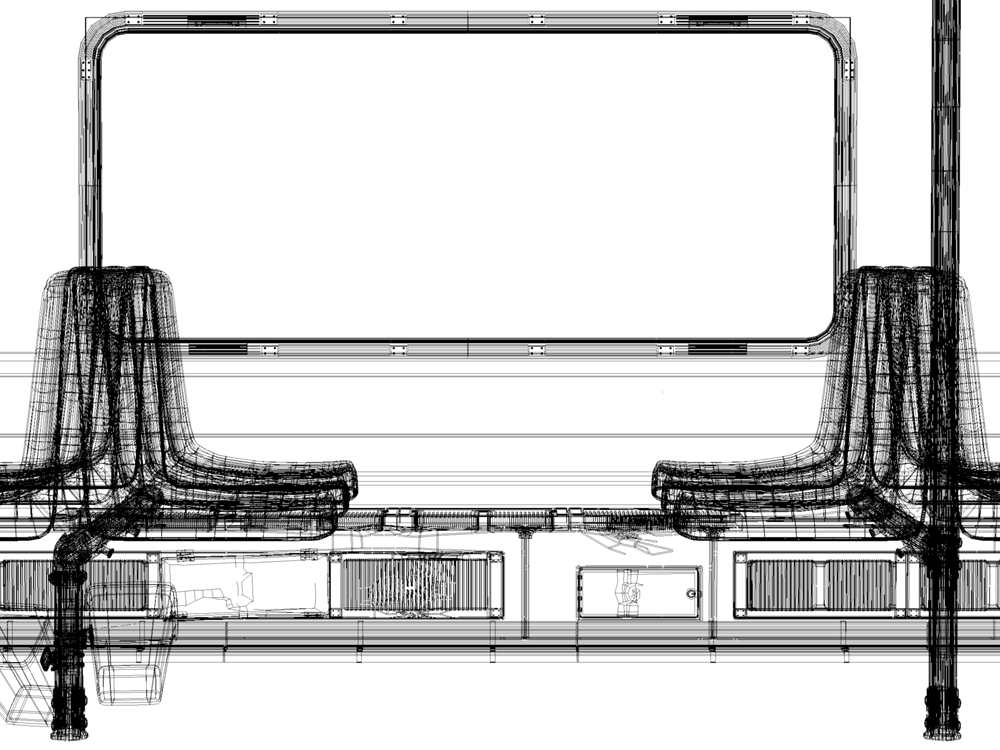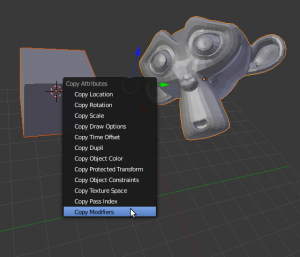Time to Rig
 Our character concept art has been finaled for a while (expect a post with pretty pictures soon). All I really need to know is where the joints and outlines are, which I can get from the concepts, so it is at least a good time to begin rigging.
Our character concept art has been finaled for a while (expect a post with pretty pictures soon). All I really need to know is where the joints and outlines are, which I can get from the concepts, so it is at least a good time to begin rigging.
My last production character rigs have all been in Blender 2.4x, examples can be seen online in the Mancandy rig and the rigs I did for CNIPA ( Suzanne Award winning entry by Spark Digital Entertainment). These rigs are ‘old’- there’s been progress/new ideas in the world of rigging, and Blender 2.5 is designed to enable (some) of these techniques.
Research
For research I studied two great blender rigs: Sintel by Nathan Vegdahl and Blenrig by Juan Pablo Bouza. I also looked at the features of Anzovin Setup machine rig for Maya, and had a great time looking at rigging PDFs, books, and demoreels. The basics are all the same it seems, but some features I had considered ‘optional’ are now ‘required’, and I found some awesome hints for more realism/detail in rigging, such as proceduralism, skin sliding and more. As I implement some of these I’ll blog the techniques.
Jarred and I conducted some rigging and python experiments, such as Pivot Switching, space Switching, twisting Spline IK, Mouth rigging, and more. I also made the copy menu addon for Blender because copying visual transformations was a good step in automating rigs, and taught me about the various available transformation matrixes for Blender bones.
Dan Finnegan, a previous Maya user, learned enough Blender to do cloth simulation tests in controlled situations. As a result we are quite nervous about using Blender’s cloth in production! We’ll opt probably for a rigged solution, or a cloth solution that only does part of the work and requires rigging for the rest. Our cloth requirements are quite extensive based on the concept, but not as bad as some of our early clothing designs. Thanks to work done by the team at project durian, we can at least use cloth sims in linked characters.
Results
 I had great help from JPBouza, who customized a Blenrig model and rig to Gilgamesh proportions from the Zepam mesh – after deliberation, I will do a from scratch rig for our main character, while borrowing some features from this rig, the most important in my opinion is the awesome mesh deformation cage he has made that gets excellent results, which he adapted to Gilga’s proportions, so I’ll probably use that with no modification. I’ve got a list of ‘must have’ features, a good idea of how the overall rig should look like, and a list of ‘nice to have’ features. Some ‘advanced’ techniques are surprisingly easy to do, while some (ahem, skin sliding) will take more work to find workable.
I had great help from JPBouza, who customized a Blenrig model and rig to Gilgamesh proportions from the Zepam mesh – after deliberation, I will do a from scratch rig for our main character, while borrowing some features from this rig, the most important in my opinion is the awesome mesh deformation cage he has made that gets excellent results, which he adapted to Gilga’s proportions, so I’ll probably use that with no modification. I’ve got a list of ‘must have’ features, a good idea of how the overall rig should look like, and a list of ‘nice to have’ features. Some ‘advanced’ techniques are surprisingly easy to do, while some (ahem, skin sliding) will take more work to find workable.
Requirements
We need to start animation in September, so the first thing is deadlines: we need the main body controls locked down by then. No time to wait for a final character model, so I work on a proxy I made for rigging.
A small list of needed features on the very basic proxy:
- IK/FK Blending on the arms and legs
- Locked Elbows for the arms
- Locked Knees for the legs
- Adjustable automatic shoulder rotation
- Adjustable rotation isolation for arms in FK
- Seamless IK/FK blending for legs and arms
- FK control chain for Torso
- Adjustable rotation isolation for torso controls in FK
- IK controls for Torso
- FK/IK switch for Torso
- Seamless Pivot Switching for Torso
- Toe-Midfoot-Heel Pivot for Feet
- Neck controls that allow nice motion/deformation of Gilgamesh’s very unique neck and shoulders
- Eye direction and tracking controls
- Rule tagged bones for easy adjustment and robustness of the rig (with rigamarule)
- Optional stretch for arms, legs and torso
This is not the final list, is enough to get animation started, but not finaled. More features will happen, some on the proxy, some after we get the final character model done, such as:
- Facial animation
- Hand and finger animation
- Deformation tweaks
- Bend tweaks
- Cloth and hair
- Procedural shakes and vibration
- Direct knee and elbow control
Progress
 We’ve got the basic FK controls for the Torso, IK and FK for the arms and legs, Auto shoulder rotation tweakable, IK FK blending working on arms and legs, seamless (no jump) blending working 90% on the arms (both ways) and working on the legs going from IK to FK. An initial control UI exists, ready for tweaks, and we have rigamarule ported to 2.5, lacking only nice UI so we can start tagging bones (Thanks Daf and Josh)
We’ve got the basic FK controls for the Torso, IK and FK for the arms and legs, Auto shoulder rotation tweakable, IK FK blending working on arms and legs, seamless (no jump) blending working 90% on the arms (both ways) and working on the legs going from IK to FK. An initial control UI exists, ready for tweaks, and we have rigamarule ported to 2.5, lacking only nice UI so we can start tagging bones (Thanks Daf and Josh)








